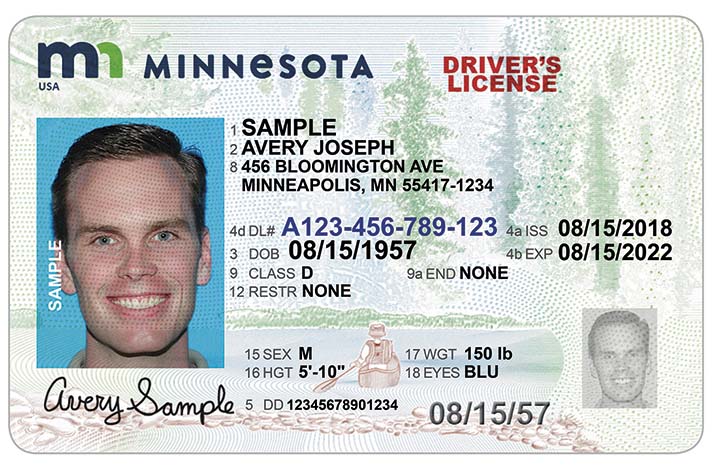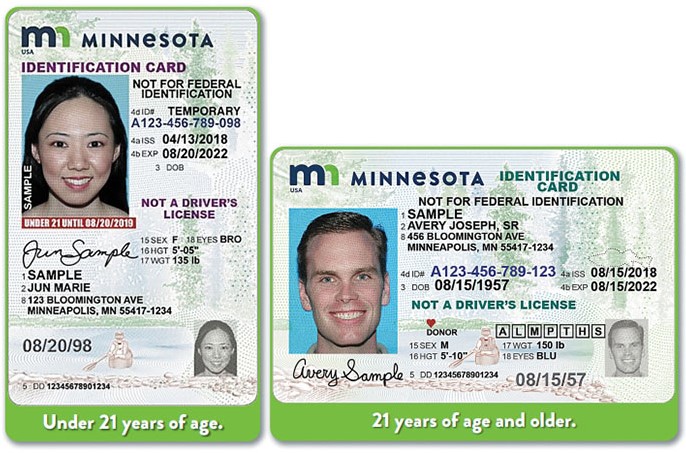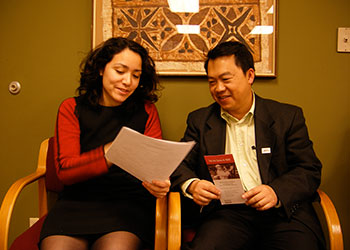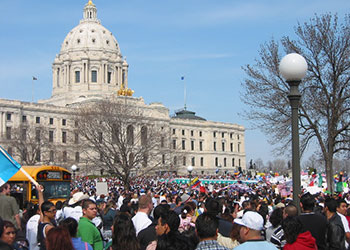News > Fact Sheets
Frequently Asked Questions: Driver’s Licenses for All
Posted on Mar 31 2023
Current as of March 28, 2023. This fact sheet is a work in progress and will be updated as needed. It is not legal advice.
- Arabic / أسئلة كثيرا ما تُسْأَل (أسئلة شائعة): “رخصة قيادة للجميع” – العربية
- Les Questions Fréquemment Posées : Le Permis de conduire Pour Tous – français / French
- Kesyon yo poze souvan: Lisans chofè pou tout moun – kreyòl ayisyen/Haitian Creole
- Cov Lus nug tsis tu ncua: Daim ntawv tsav tsheb rau sawv daws – Hmoob/Hmong
- တၢ်သံကွၢ်တဖၣ်လၢ ဘၣ်တၢ်သံကွၢ်အီၤ ခဲအံၤခဲအံၤ-ပှၤနီၣ်သိလ့ၣ် အလဲးစ့ၣ် လၢပှၤကိးဂၤဒဲးအဂီၢ် – Karen
- Preguntas más frecuentes: Licencias de Conducir para Todos – Español/Spanish
- Had iyo Jeer la is weeydiiyo: Shatiga darawalnimada oo Idil – Soomaali/Somali
- Maswali Yanayoulizwa Mara Kwa Mara: Leseni za Udereva kwa Wote – kiswahili/Swahili
- Поширені запитання: Водійські посвідчення для всіх – українська/Ukrainian
On March 7, 2023, Governor Tim Walz signed Driver’s Licenses for All into law. The law will go into effect on October 1, 2023. This fact sheet summarizes the new law only.
Over the next few months, the Department of Public Safety (DPS), ILCM, and our partners will be preparing other resources to help you prepare to apply for a driver’s license. For the latest resources, please visit www.ilcm.org.
To make this fact sheet easier to read, we refer to “driver’s licenses” throughout, but state identification cards are also available under the new law.

1. Who can obtain a driver’s license under the new law?
Starting October 1, all Minnesotans can obtain a driver’s license regardless of immigration status. To get a driver’s license, an applicant who is 21 or older must prove their identity, pass the vision test, and pass the written and driving tests. The requirements for applicants who are between 16 and 21 are different.
2. What kind of driver’s license is available under the Driver’s Licenses for All law?
Starting October 1, all Minnesotans will be eligible for a standard Class D driver’s license regardless of immigration status (ID image above). There will be no markings on the license indicating citizenship or immigration status.
There are two other licenses available in Minnesota: enhanced and Real ID driver’s licenses. To obtain an enhanced or Real ID license, an applicant must prove citizenship or a qualifying immigration status.

3. What if I just want an ID but not to drive?
A person of any age may apply for a Minnesota Identification card (ID image above). After October 1, any person of any age may apply for a Minnesota Identification card regardless of immigration status. The applicant must apply for the card and pay the required fee and present proof of identity (same types of identity documents as allowed for a driver’s license). Starting October 1, all Minnesotans will be eligible for Minnesota Identification cards regardless of immigration status. There will be no markings on the identification card indicating citizenship or immigration status.
4. What kind of documents can be used to prove identity?
Applicants for standard Class D driver’s licenses are already able to use the identity documents listed here to prove their identity. Starting October 1, applicants will also be able to use several foreign and immigration documents to prove their identity. These documents include the following, and the Department of Public Safety (DPS) will publish a longer list of acceptable documents closer to October 1:
- Foreign passport
- Foreign birth certificate
- Foreign adoption certificate
- Certain immigration filing and approval notices
5. It will be difficult for me to get the identity documents required for this application. What should I do?
This law will not go into effect until October 1, 2023, so this gives you some time to gather the required documents. If you cannot get them, there may still be a way to apply for the driver’s license (through something called a “variance process”). DPS is still working out the details of some of these processes and will make more information available closer to October 1.
6. Do I need to provide proof of citizenship or immigration status to obtain a standard Class D driver’s license?
Starting October 1, applicants for standard Class D driver’s licenses do not need to provide proof of citizenship or immigration status to obtain a driver’s license. In fact, DPS is not allowed to ask applicants for Class D driver’s licenses about their citizenship or immigration status.
7. I am undocumented (for example, entered the United States without a visa, entered on a visa and stayed once it expired, etc.). Can I get a Minnesota driver’s license?
Yes. Starting October 1, proof of immigration status will not be required as a part of an application for a Minnesota driver’s license. You will need to provide the required identity documents (see question #4), but you will not need to have or prove lawful immigration status to be eligible for a Minnesota driver’s license.
8. Does the driver’s license grant any immigration status or work authorization to undocumented immigrants?
No. Immigration status is a matter of federal law. Driver’s licenses issued under state law do not grant immigration status or work authorization.
9. What are the privacy protections in the Driver’s Licenses for All law?
Starting October 1, there will be strict restrictions on DPS’s ability to share information outside the agency about someone who holds a Class D driver’s license.
First, DPS is not allowed to share any information about an individual’s citizenship or immigration status. There is one exception: DPS can share this data with the Minnesota Secretary of State (SOS) to improve voter registration records.
Second, DPS is not allowed to share any information about individuals who have applied for or received a Class D driver’s license with ICE unless DPS is ordered by a court to do so.
Third, if DPS shares any information outside the agency about individuals who have applied for or received a Class D driver’s license, the receiving agency must sign a certification that they will not share the information with ICE or use the information to enforce immigration laws.
10. If I got a Social Security Number for temporary purposes but it is no longer valid for work, is that the one I should list on the application?
A Social Security Number (SSN) is not required to obtain a standard Class D driver’s license. The Driver’s License application will ask applicants to list their social security number. If you have one, you must provide it. This is true even if you do not have lawful immigration status and the SSN is not valid for work purposes. If you do not have one, you will sign attesting to not having one.
11. Should I list ITIN if I have one?
Do not list your ITIN number in the space for the SSN. The updated Driver’s License application may ask for an ITIN number. If it asks for the ITIN number you should provide it. DPS will provide more information about this at a later date.
12. Where can I apply for the license? Do I have to do it myself?
Minnesota Driver and Vehicle Services (DVS) has information about office locations, testing schedules, and fees for driver’s license applications available on the Minnesota DVS website. You can complete the application process in person at a DVS location or an official DVS-partner location. You can also complete parts of the application process, such as the written test, at official DVS-partner community organizations. Be sure that you are completing your own application and that you are submitting your application at a DVS location or an official DVS-partner. Applications must be submitted by the individual who is applying for the license and cannot be submitted until October 1.
13. What if I got a driver’s license in another state?
If you got a driver’s license in another state, check the Minnesota DVS website. The answer depends on where you got the license, and whether it is still valid at the time you apply for the Minnesota license. Please ask DVS directly if you have questions after reviewing their website and/or ask an immigration attorney if you have questions about the documents you used to get the license in the other state.
PDF Version of this FAQ – English
- Arabic / أسئلة كثيرا ما تُسْأَل (أسئلة شائعة): “رخصة قيادة للجميع” – العربية
- Les Questions Fréquemment Posées : Le Permis de conduire Pour Tous – français / French
- Kesyon yo poze souvan: Lisans chofè pou tout moun – kreyòl ayisyen/Haitian Creole
- Cov Lus nug tsis tu ncua: Daim ntawv tsav tsheb rau sawv daws – Hmoob/Hmong
- တၢ်သံကွၢ်တဖၣ်လၢ ဘၣ်တၢ်သံကွၢ်အီၤ ခဲအံၤခဲအံၤ-ပှၤနီၣ်သိလ့ၣ် အလဲးစ့ၣ် လၢပှၤကိးဂၤဒဲးအဂီၢ် – Karen
- Preguntas más frecuentes: Licencias de Conducir para Todos – Español/Spanish
- Had iyo Jeer la is weeydiiyo: Shatiga darawalnimada oo Idil – Soomaali/Somali
- Maswali Yanayoulizwa Mara Kwa Mara: Leseni za Udereva kwa Wote – kiswahili/Swahili
- Поширені запитання: Водійські посвідчення для всіх – українська/Ukrainian




